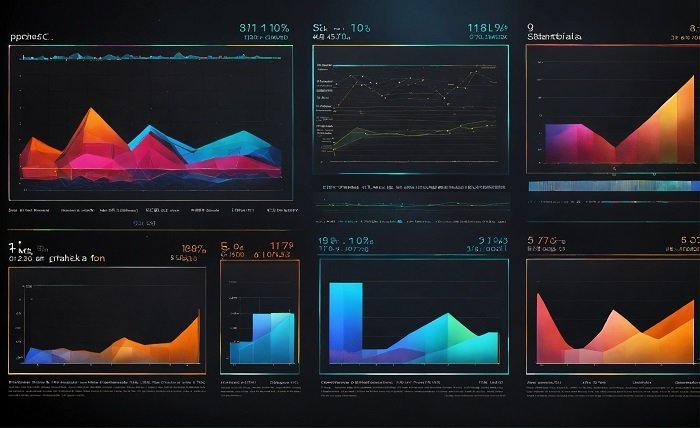Unfite Volume: A Comprehensive Guide to its Meaning, Usage, and Benefits

Introduction
The term unfite volume is gaining traction across various disciplines, sparking curiosity and interest among professionals and enthusiasts alike. Whether it’s applied in scientific contexts, creative industries, or technology, understanding unfite volume opens new possibilities for optimizing processes and outcomes. In this blog, we’ll explore the concept of unfite volume, its relevance, and its potential to transform how we approach different tasks.
What is Unfite Volume?
At its core, unfite volume refers to a non-standard or unconventional measurement approach that goes beyond traditional volumetric assessments. It challenges conventional methods by introducing flexibility in calculating and analyzing spatial dimensions. Unlike rigid volume measurements, unfite volume adapts to unique shapes, irregular spaces, and dynamic scenarios, making it a versatile tool in various fields. From engineering to design, unfite volume redefines how we perceive and quantify space.
Applications of Unfite Volume in Science and Technology
In the realm of science and technology, unfite volume has found significant applications. For instance, in material sciences, unfite volume helps in analyzing irregularly shaped nanoparticles, enabling precise calculations of their properties. Similarly, in software development, unfite volume is utilized to optimize data storage within irregularly partitioned cloud systems. Moreover, the concept of unfite volume plays a crucial role in robotics, where calculating the spatial dynamics of moving parts requires adaptable volumetric measurements. These examples highlight the broad applicability and importance of unfite volume in advancing innovation.
The Role of Unfite Volume in Creative Industries
The creative industries also benefit immensely from the concept of unfite volume. Architects and interior designers often rely on unfite volume to visualize and utilize unconventional spaces effectively. Artists and sculptors use unfite volume to explore new dimensions in their creations, breaking free from traditional constraints. Furthermore, virtual reality (VR) and augmented reality (AR) developers leverage unfite volume to create immersive environments, ensuring accurate representation of non-standard spaces. By embracing unfite volume, the creative world continues to push the boundaries of what’s possible.
Advantages of Incorporating Unfite Volume
The adoption of unfite volume comes with a myriad of advantages. First and foremost, unfite volume allows for greater precision in analyzing irregular or dynamic spaces, ensuring that calculations align with real-world scenarios. This adaptability leads to better resource allocation and optimized designs. Additionally, unfite volume fosters innovation by encouraging out-of-the-box thinking, enabling professionals to tackle challenges with creative solutions. Finally, the flexibility inherent in unfite volume reduces errors that arise from rigid measurement systems, promoting accuracy and efficiency in diverse applications.
How to Implement Unfite Volume in Everyday Processes
Incorporating unfite volume into daily operations requires a strategic approach. Start by identifying areas where traditional volumetric methods fall short or fail to capture irregular dimensions accurately. Next, invest in tools and technologies that support the calculation and visualization of unfite volume. For instance, software with advanced spatial analysis features can simplify the process. Training and upskilling employees to understand and apply unfite volume concepts is equally important. By gradually integrating unfite volume into workflows, organizations can unlock new levels of efficiency and innovation.
Challenges and Limitations of Unfite Volume
Despite its numerous advantages, unfite volume is not without its challenges. One significant hurdle is the lack of standardized methodologies for calculating unfite volume, which can lead to inconsistencies across applications. Additionally, the tools required for measuring unfite volume are often sophisticated and may demand substantial investments. Another limitation is the steep learning curve associated with mastering the concept of unfite volume, particularly for professionals accustomed to traditional volumetric systems. Addressing these challenges requires continuous research, development, and education to make unfite volume more accessible.
The Future of Unfite Volume
The future of unfite volume looks promising, with advancements in technology paving the way for broader adoption. Innovations such as artificial intelligence (AI) and machine learning (ML) are expected to enhance the accuracy and efficiency of unfite volume calculations. Additionally, as industries increasingly recognize the value of adaptability and precision, the demand for unfite volume is likely to grow. Collaborative efforts between researchers, developers, and industry leaders will be key to refining and standardizing unfite volume, ensuring its relevance and utility in the years to come.
Conclusion
In conclusion, unfite volume represents a paradigm shift in how we approach measurements and spatial analysis. Its flexibility, precision, and versatility make it a valuable concept across science, technology, and creative industries. While challenges exist, the potential of unfite volume to drive innovation and improve efficiency is undeniable. By embracing unfite volume, professionals can unlock new opportunities and redefine the boundaries of their respective fields.
FAQs
1. What does unfite volume mean?
Unfite volume refers to a flexible approach to measuring and analyzing space, particularly in irregular or dynamic scenarios.
2. How is unfite volume different from traditional volume?
Unlike traditional volume, which relies on fixed formulas, unfite volume adapts to unique shapes and non-standard dimensions.
3. Where is unfite volume used?
Unfite volume is used in various fields, including material sciences, architecture, robotics, virtual reality, and data optimization.
4. What are the benefits of using unfite volume?
The benefits of unfite volume include greater precision, improved resource allocation, enhanced creativity, and reduced measurement errors.
5. How can I start using unfite volume?
To start using unfite volume, identify applicable areas in your work, invest in suitable tools, and learn about the concept through training and resources.
By integrating unfite volume into your processes, you can harness its transformative potential and stay ahead in a competitive landscape.





